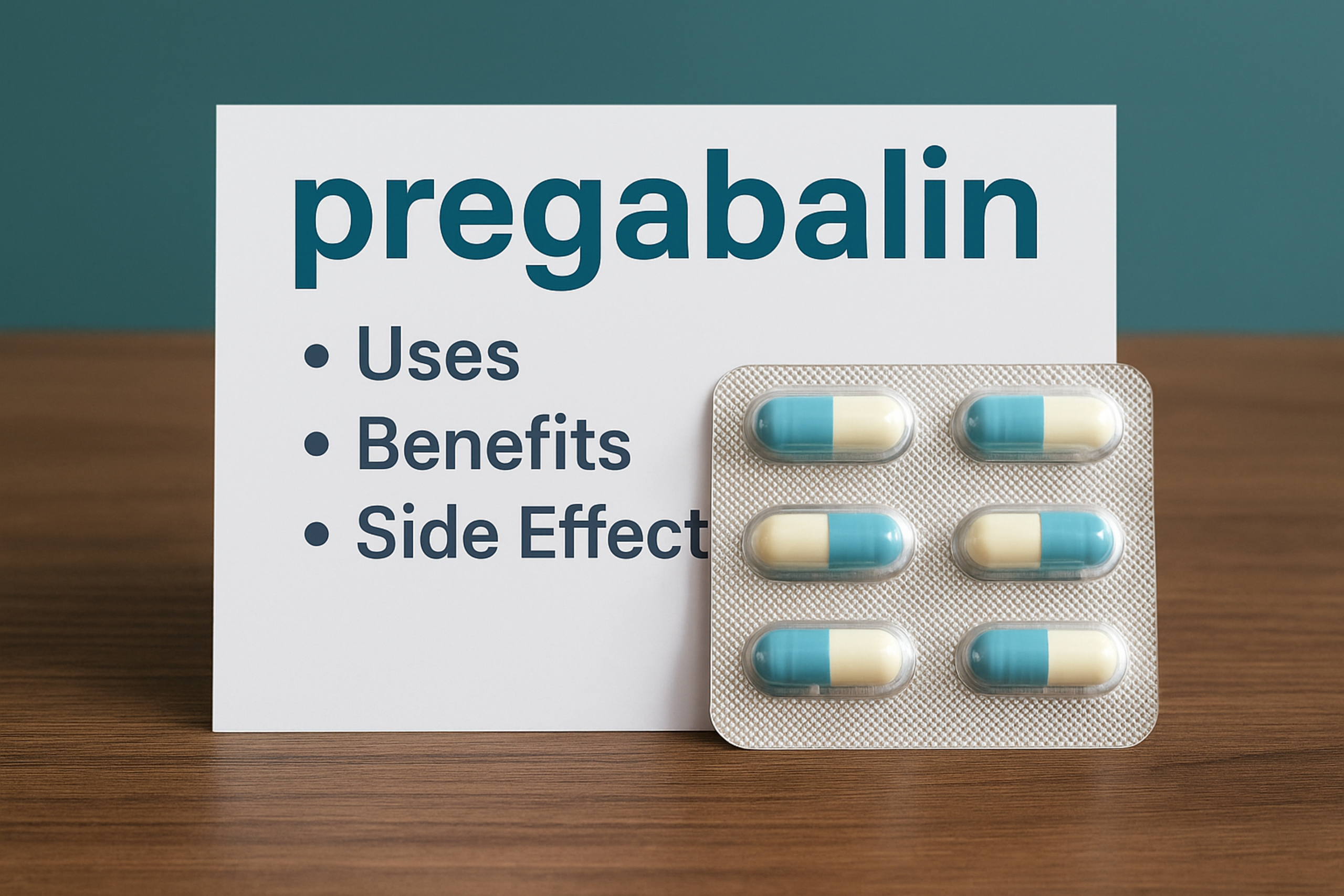Pregabalin, often sold under the brand name Lyrica, is a widely prescribed medication that helps manage nerve-related pain, seizures, and anxiety. It’s not an everyday painkiller — Pregabalin works deep within your nervous system to calm overactive nerve signals.
But what exactly does it do? Who should take it? And what should you watch out for?
Let’s dive into a complete guide to Pregabalin: its uses, how it works, and what you need to know before starting it.
🧠 What Is Pregabalin?
Pregabalin is a prescription medication that affects the way nerves send messages to the brain. It’s a type of anticonvulsant, but it’s often used for much more than seizures.
It works by calming nerve signals that may be overactive or misfiring — which helps reduce pain, anxiety, and seizures.
🔹 Primary Uses of Pregabalin
1. Nerve Pain (Neuropathic Pain)
Pregabalin is commonly used to relieve nerve pain caused by:
- Diabetes (diabetic neuropathy)
- Shingles (postherpetic neuralgia)
- Spinal cord injuries
- Fibromyalgia
These conditions cause burning, shooting, or tingling pain that regular painkillers don’t touch — but Pregabalin can.
2. Epilepsy
Pregabalin helps control partial-onset seizures by stabilizing nerve activity in the brain. It’s usually prescribed alongside other anti-seizure medications.
3. Generalized Anxiety Disorder (GAD)
In some countries, Pregabalin is approved to treat chronic anxiety. It works differently than antidepressants or benzodiazepines and has a lower risk of dependency (though not zero).
🕒 How to Take Pregabalin
- Form: Capsules, oral solution, or extended-release tablets
- Dosing: Usually taken 1–3 times per day, depending on the formulation
- With or without food
- Always follow your doctor’s instructions
Never stop Pregabalin suddenly — it may cause withdrawal symptoms or seizures. Tapering off slowly under medical supervision is essential.
⚠️ Common Side Effects
Most side effects are mild and go away over time. These may include:
- Dizziness or drowsiness
- Blurred vision
- Weight gain
- Swelling in hands or feet
- Dry mouth
- Trouble concentrating
🚨 Serious Risks (Though Rare)
- Suicidal thoughts or mood changes
- Severe allergic reactions
- Breathing problems (especially when combined with opioids or alcohol)
Always inform your doctor if you experience:
- Severe depression
- Difficulty breathing
- Unusual swelling or rashes
🔒 Is Pregabalin Addictive?
Pregabalin is classified as a controlled substance in many countries because it has some potential for misuse — especially in high doses or in combination with other sedatives.
However, when taken responsibly and as prescribed, it is generally safe and non-addictive for most patients.
🤔 Should You Use Pregabalin?
Pregabalin is a helpful and effective tool when:
- You’re dealing with long-term nerve pain
- Other medications haven’t worked
- You need a non-opioid option for chronic pain or anxiety
But it’s not suitable for everyone, especially those with a history of substance abuse, breathing issues, or severe depression.
✅ Final Thoughts
Pregabalin offers real relief for people suffering from nerve pain, seizures, and anxiety. Like any powerful medication, it must be used carefully and under medical guidance.
If you’ve been prescribed Pregabalin, ask questions, stay informed, and watch for side effects — but know that many patients experience significant improvements in quality of life.
💬 Have you or someone you know used Pregabalin? Share your experience, or ask questions in the comments below!


